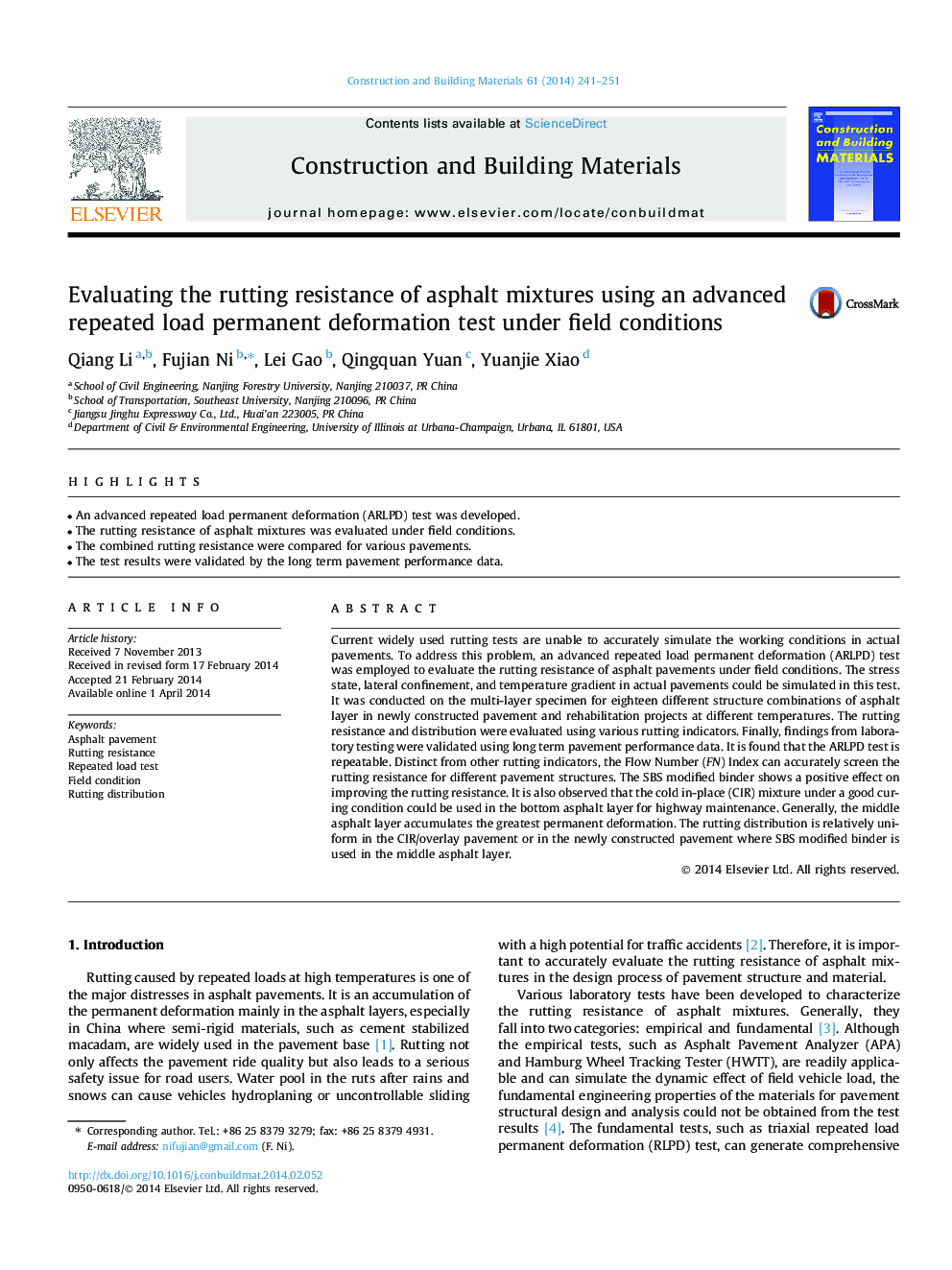| Article ID | Journal | Published Year | Pages | File Type |
|---|---|---|---|---|
| 257657 | Construction and Building Materials | 2014 | 11 Pages |
•An advanced repeated load permanent deformation (ARLPD) test was developed.•The rutting resistance of asphalt mixtures was evaluated under field conditions.•The combined rutting resistance were compared for various pavements.•The test results were validated by the long term pavement performance data.
Current widely used rutting tests are unable to accurately simulate the working conditions in actual pavements. To address this problem, an advanced repeated load permanent deformation (ARLPD) test was employed to evaluate the rutting resistance of asphalt pavements under field conditions. The stress state, lateral confinement, and temperature gradient in actual pavements could be simulated in this test. It was conducted on the multi-layer specimen for eighteen different structure combinations of asphalt layer in newly constructed pavement and rehabilitation projects at different temperatures. The rutting resistance and distribution were evaluated using various rutting indicators. Finally, findings from laboratory testing were validated using long term pavement performance data. It is found that the ARLPD test is repeatable. Distinct from other rutting indicators, the Flow Number (FN) Index can accurately screen the rutting resistance for different pavement structures. The SBS modified binder shows a positive effect on improving the rutting resistance. It is also observed that the cold in-place (CIR) mixture under a good curing condition could be used in the bottom asphalt layer for highway maintenance. Generally, the middle asphalt layer accumulates the greatest permanent deformation. The rutting distribution is relatively uniform in the CIR/overlay pavement or in the newly constructed pavement where SBS modified binder is used in the middle asphalt layer.
